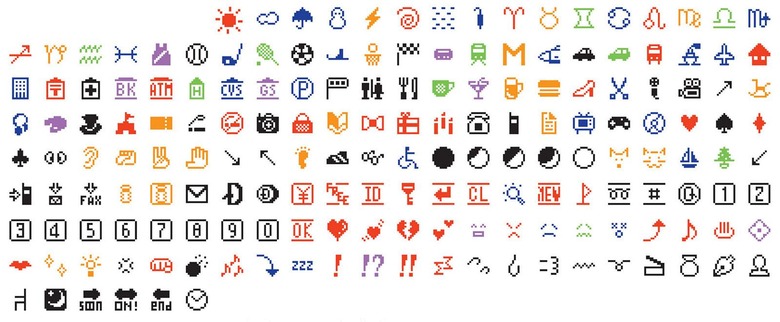The First 176 Emoji Go On Display At Museum Of Modern Art
Whether you love them or despise them, emoji have become a staple of modern communication on mobile platforms. In the eyes of New York City's Museum of Modern Art, that makes them a form of artwork. To that effect, the museum has announced that it's adding the original 176 emoji, created in Japan, to go on permanent display starting in December.
At first glance, these 176 icons don't look anything like the emoji you'd find on your iPhone or Android device today. That's because they were designed in 1999 by Shigetaka Kurita for pagers on Japanese carrier NTT Docomo. The characters rely on a grid measuring just 12 by 12 pixels, and use only 12 colors.
However, if you look closely, you can see that a number of these icons are precursors to the emoji we know & love today. There's a few simplified smiley, frown, and cat faces, various hand gestures, and objects for sports, transportation, and the zodiac symbols.

While there's far less emoji to convey emotions than we have now, most of the classic icons still do a decent job representing ideas and objects.
"With the advent of email in the 1970s ... the conveyance of tone and emotion became both harder and more urgently important," said MoMA design specialist Paul Galloway. "When combined with text, these simple images allow for more nuanced intonation."
12 years later, when Apple first adopted emoji for use on the iPhone, their use around the globe exploded. Now we have roughly 2,000 standard emoji supported by unicode, tools like emojitracker that track the characters' use on Twitter in real-time, and even iOS 10, which will suggest emoji to replace words as they're being typed in text messages.
SOURCE MoMA
